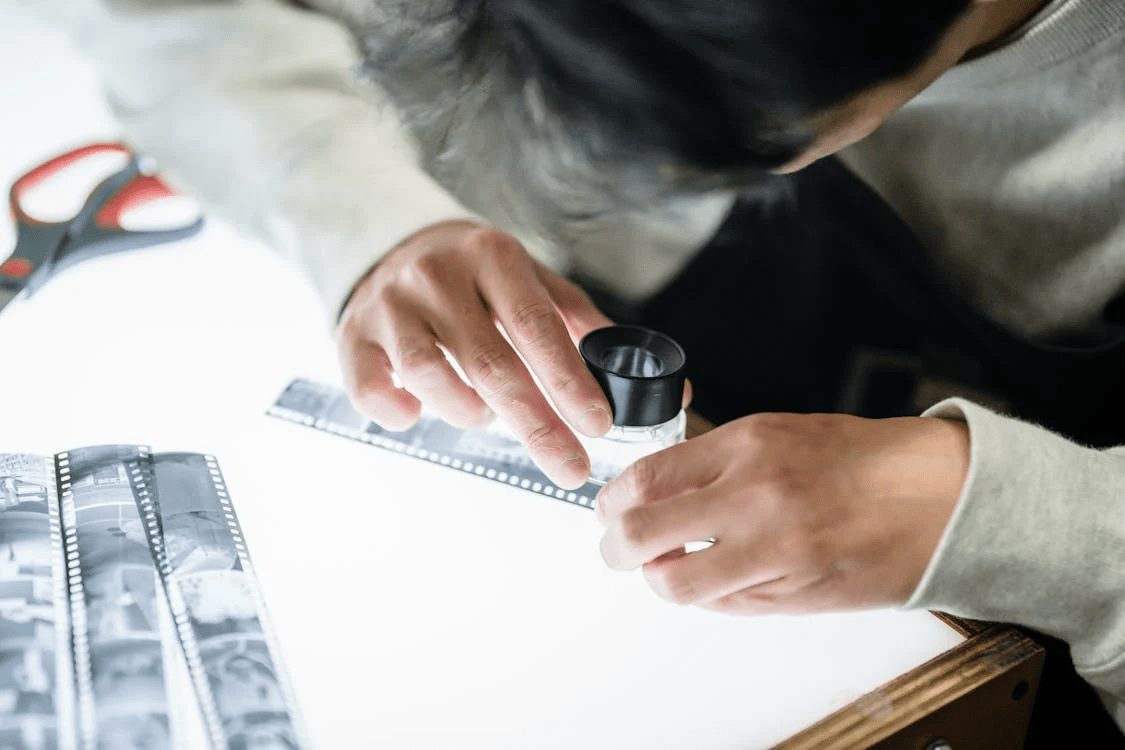2025
am
How DPI and Bit Depth Impact Film Negative Scanning Quality Written by: Brandon Harris, Smooth Photo Scanning Services

If you’ve ever held a strip of old film negatives up to the light, you know they don’t look like much at first—just tiny, inverted images with a brownish or bluish tint. But hidden in those strips is a wealth of detail waiting to be uncovered. Converting negatives to digital photos can bring those moments back to life in stunning clarity.
The key to a high-quality scan is DPI (dots per inch) and bit depth. These two factors determine the detail and color accuracy of your digital image. Choose the correct settings, and your old negatives can look as sharp and vibrant as the day they were developed. Choose the wrong ones, and you might have blurry or faded results.
What do these settings mean, and how do they impact the final scan? Let’s take a closer look.
Understanding DPI in Film Negative Scanning
When scanning film negatives, DPI (dots per inch) plays a significant role in image quality. A higher DPI captures more detail, making your digital photos sharper and more precise.Professional negative scanning services use the proper DPI settings to ensure your photos look their best. So, what DPI should you choose? Let’s break it down.
How DPI Affects Scanning Quality
Low DPI (300–1200 DPI):
- Suitable for quick previews or essential digital storage.
- Lacks sharpness for printing or detailed restoration.
- It is best for web display but not recommended for archiving.
Medium DPI (2000–3000 DPI):
- It is ideal for most film negatives, balancing detail and file size.
- A 2400 DPI scan can produce crisp 8″ x 10″ prints.
- Recommended for personal photo collections and moderate enlargements.
High DPI (4000 DPI):
- Necessary for professional archiving, large prints, and restorations.
- A 4000 DPI scan allows for enlargements up to 24″ x 36″.
- It captures fine details but may emphasize film grain, especially in high-ISO negatives.
Choosing the Right DPI for Your Film Format
- 35mm Negatives: 2000–4000 DPI for high-quality prints and digital preservation.
- Medium & Large Format Negatives: 2000–4000 DPI, depending on print size needs.
- Old or Faded Negatives: Higher DPI can help capture faint details for restoration.
Key Tip:Scanning beyond your scanner’s optical resolution won’t improve quality and may introduce noise. Professional negative scanning services use high-end equipment to ensure the best results.
The Role of Bit Depth in Image Quality
Bit depth refers to the amount of color or grayscale information captured in a scanned image. A higher bit depth provides more shades and tones, reducing banding and improving overall image quality.
Common Bit Depth Levels
- 8-bit (256 colors per channel): Limited color range, often used for web images.
- 16-bit (65,536 colors per channel): Much higher color accuracy, better for editing and printing.
16-bit scanning is the standard choice for film negatives, capturing fine details in shadows and highlights.
Finding the Right Balance
Choosing the right combination of DPI and bit depth is key when scanning film negatives. Here’s a quick guide:
| Purpose | Recommended DPI | Recommended Bit Depth |
|---|---|---|
| Basic viewing | 300-1200 DPI | 8-bit |
| Printing small/medium photos | 2000–3000 DPI | 16-bit (24 bit) |
| Large prints and restorations | 4000+ DPI | 16-bit or higher (24 bit) |
Why Professional Negative Scanning Services Matter
While it’s possible to scan negatives at home, professional negative scanning services offer advanced technology and expertise to ensure the best results. Here’s why choosing a professional service makes a difference:
- High-resolution scanning – Capture the finest details with industry-grade scanners.
- Color correction – Restore faded negatives with precise color adjustments.
- Dust and scratch removal – Advanced techniques ensure clean, high-quality scans.
- Proper file handling – Get optimized files without losing quality.
Smooth Photo Scanningspecializes in high-quality negative scanning, ensuring that your memories are preserved with the best clarity and detail.
Conclusion
Film negatives hold priceless memories, but their details can fade without proper scanning. The right combination of DPI and bit depth ensures that your scanned images are sharp, vibrant, and accurate to the original. Instead of risking low-quality scans, trust professional negative scanning services to handle your memories with care.
Smooth Photo Scanning uses advanced technology to deliver high-resolution, color-accurate results that stand the test of time. Whether you want to convert negatives to digital photos for personal keepsakes or professional use, we ensure top-quality preservation.
Contact Smooth Photo Scanning todayand let us help you safeguard your history with precision and expertise.


